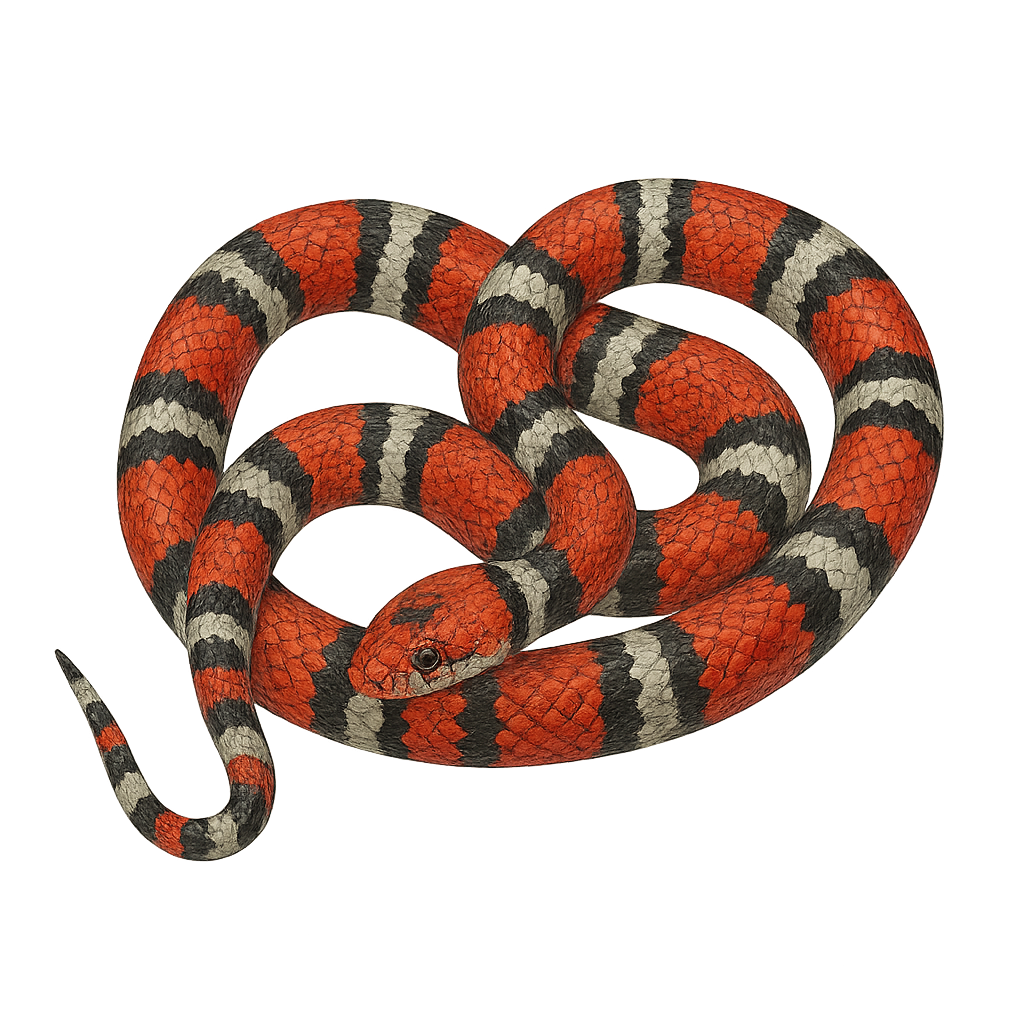Your wildlife photography guide.
Explore the milk snake in detail, study its behavior, prepare your shots.
Where to observe and photograph the milk snake in the wild
Learn where and when to spot the milk snake in the wild, how to identify the species based on distinctive features, and what natural environments it inhabits. The WildlifePhotographer app offers tailored photography tips that reflect the milk snake’s behavior, helping you capture better wildlife images. Explore the full species profile for key information including description, habitat, active periods, and approach techniques.
Milk snake
Scientific name: Lampropeltis triangulum

IUCN Status: Least Concern
Family: COLUBRIDAE
Group: Reptiles
Sensitivity to human approach: Tolerant
Minimum approach distance: 3 m
Reproduction period: March to May
Incubation: 28–39 jours
Births: March to May
Habitat:
Forests, grasslands, rocky areas
Activity period :
Mainly active at night, generally discreet during the day.
Identification and description:
The Lampropeltis triangulum, commonly known as the milk snake, is a non-venomous snake from the Colubridae family. It is famous for its colorful patterns that mimic those of venomous coral snakes, a classic example of Batesian mimicry. This snake is generally medium-sized, measuring between 60 and 120 cm in length. Its coloration varies depending on the subspecies, but it often features red, black, and white or yellow bands. It inhabits a variety of environments, from forests to grasslands, and primarily feeds on small mammals, birds, and other reptiles. Nocturnal by nature, it is mostly active at night and rests during the day.
Recommended lens:
100 mm – adjust based on distance, desired framing (portrait or habitat), and approach conditions.
Photography tips:
To photograph the milk snake, focus on nocturnal or twilight hours when it is most active. Use a lens of 100 mm or more to capture details without getting too close. Ensure you maintain a safe distance of at least 3 meters to avoid disturbing it. A tripod can be helpful to stabilize your camera in low-light conditions. Finally, be patient and wait for the snake to move naturally to capture dynamic and interesting shots.
The WildlifePhotographer App is coming soon!
Be the first to explore the best nature spots, track rutting seasons, log your observations, and observe more wildlife.
Already 1 432 wildlife lovers subscribed worldwide

